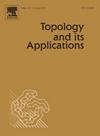环面的上同基
IF 0.6
4区 数学
Q3 MATHEMATICS
引用次数: 0
摘要
给定一个紧致环面,其有理上同调的乘法可以用Weil除数的交积来描述,或者用上同调类的杯积来表示特定的单元。在本文中,我们的目的是比较这两种描述。更准确地说,我们定义了两种不同的上同基,即庞加莱对偶基和元胞基,它们产生了表示交积和杯积的矩阵。我们证明了这些表示矩阵是彼此逆的。本文章由计算机程序翻译,如有差异,请以英文原文为准。
Cohomology bases of toric surfaces
Given a compact toric surface, the multiplication of its rational cohomology can be described in terms of the intersection products of Weil divisors, or in terms of the cup products of cohomology classes representing specific cells. In this paper, we aim to compare these two descriptions. More precisely, we define two different cohomology bases, the Poincaré dual basis and the cellular basis, which give rise to matrices representing the intersection product and the cup product. We prove that these representing matrices are inverse of each other.
求助全文
通过发布文献求助,成功后即可免费获取论文全文。
去求助
来源期刊
CiteScore
1.20
自引率
33.30%
发文量
251
审稿时长
6 months
期刊介绍:
Topology and its Applications is primarily concerned with publishing original research papers of moderate length. However, a limited number of carefully selected survey or expository papers are also included. The mathematical focus of the journal is that suggested by the title: Research in Topology. It is felt that it is inadvisable to attempt a definitive description of topology as understood for this journal. Certainly the subject includes the algebraic, general, geometric, and set-theoretic facets of topology as well as areas of interactions between topology and other mathematical disciplines, e.g. topological algebra, topological dynamics, functional analysis, category theory. Since the roles of various aspects of topology continue to change, the non-specific delineation of topics serves to reflect the current state of research in topology.
At regular intervals, the journal publishes a section entitled Open Problems in Topology, edited by J. van Mill and G.M. Reed. This is a status report on the 1100 problems listed in the book of the same name published by North-Holland in 1990, edited by van Mill and Reed.

 求助内容:
求助内容: 应助结果提醒方式:
应助结果提醒方式:


